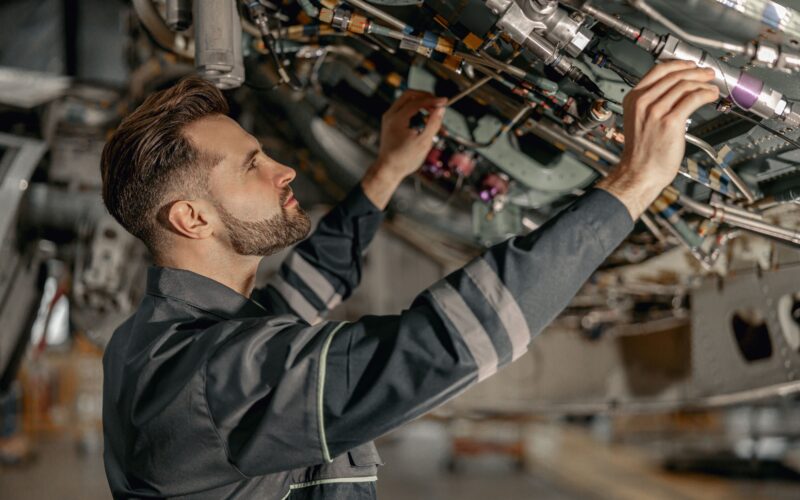The demand for aircraft engineers and technicians has risen to previously unheard-of levels in an era of rapid technical innovation and a global boom in air travel. The demand for competent people to develop, maintain, and pioneer new aircraft designs grows along with the aviation sector.
Current Demand for Aircraft Engineers and Technicians
The International Air Transport Association (IATA) predicts that by 2037, the number of passengers flying across the world will have doubled, totaling 8.2 billion passengers yearly. An increase in the aviation workforce, including engineers and technicians, is required because of this growth.
According to Boeing’s 2021 Commercial Market Outlook, over the next 20 years, the world’s commercial aviation fleet will need 43,610 new aircraft. A greater need for experts who can design, maintain, and service modern aircraft results from this significant expansion.
Moreover, the aviation sector is going through a technological revolution, with the rise of autonomous systems, advanced materials, and electric planes. Meanwhile, a sizable section of the aviation industry is getting close to retirement age, according to the Federal Aviation Administration (FAA). Jainita Hogervorst, Director of Aerviva Aviation Consultancy, a Dubai-based international consultancy, says that “new talent can now fill opportunities in a variety of aviation-related sectors as a result. To spur innovation, aeronautical engineers, and technicians with knowledge in these fields are in high demand.”
As of the latest data available, the demand for these professionals is strong and is expected to continue growing. In the United States of America, the U.S. Bureau of Labor Statistics (BLS) projects that from 2020 to 2030, the requirement for aerospace engineers will increase by 5%, which is a little faster than the average for all occupations. The BLS also predicts a 3% increase in demand for mechanics and technicians of aircraft and avionics equipment during the same time period. This prediction is in line with Boeing’s 2020 Pilot and Technician Outlook, which projected the global aviation industry will require 769,000 new maintenance technicians from 2020 to 2039.
The continual need for aircraft maintenance, repair, and retrofitting is the main cause of this growth. Furthermore, Airbus’ Global Services Forecast 2020-2039 estimated that the global MRO (Maintenance, Repair, and Overhaul) market would grow at an annual rate of 4.1%, creating ample job opportunities for aeronautic engineers and technicians.
Engineers and technicians are crucial in other ways as well. The airline sector is making an active effort to reduce its carbon impact. For instance, Airbus has set high standards for producing zero-emission aircraft by 2035. These revolutionary advancements will be led by aircraft engineers.
These professionals will play a pivotal role in shaping the future of aviation by designing eco-friendly aircraft, pioneering technological innovations, and ensuring the safety and efficiency of air travel.
In the words of Hogervorst, “The aircraft engineers and technicians of tomorrow will have the opportunity to contribute to a more sustainable and connected world where their skills are in high demand, ensuring a prosperous and innovative future where their expertise will be at the heart of the aviation industry’s ongoing success.”
Aerviva Aviation Consultancy specialises in aviation recruitment and document management, connects aspiring engineers and technicians to companies where their skills are in high demand..
In summary, the current and future demand for aeronautic engineers and technicians in the aviation industry is substantial and promising. As air travel continues to grow, alongside technological innovation, opportunities for skilled professionals in this field are poised to expand significantly.

